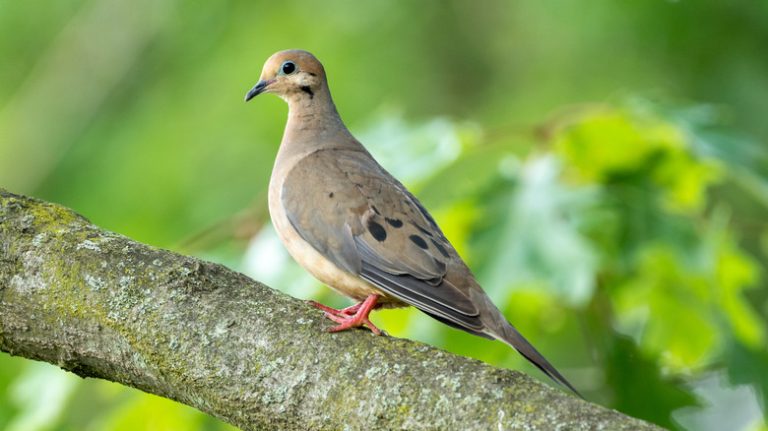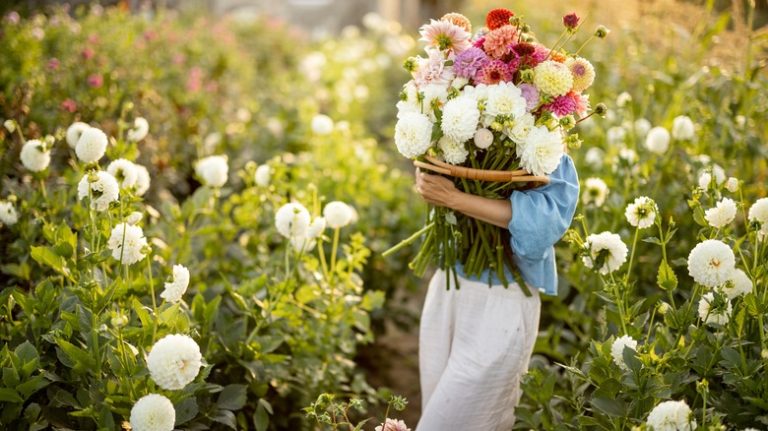Balloon flowers, also known as Platycodon, are a popular choice among gardeners for their unique blooming pattern and easy growth. These plants are native to Russia, Japan, and East Asia. They get their name from the balloon-like shape their flower buds form before they open, which gives them a whimsical and playful appearance.
When it comes to growing balloon flowers, there are a few important tips to keep in mind. First, they thrive in consistently moist conditions and do best in well-draining soil. If you’re planting them in containers, make sure the pots have drainage holes to prevent waterlogged roots.
The ideal temperature for balloon flowers is between 60 and 80 degrees Fahrenheit (15 to 27 degrees Celsius), and they prefer moderate humidity. However, they can tolerate a wide range of conditions, making them suitable for various climates. They’re also known for their resilience to diseases and pests.
There are several varieties of balloon flowers available, with blue being the most commonly sought-after color. However, they also come in pink and white, and there are even bi-colored varieties with petals that blend two shades. If you’re looking to attract birds to your garden, balloon flowers can be a great choice, as birds are often drawn to their bright blooms.
In terms of care, balloon flowers are relatively low-maintenance. They don’t require much pruning or deadheading, but you may want to remove any yellow or damaged leaves or stems to promote healthy growth. Additionally, they make excellent companion plants, as they easily grow alongside coreopsis, helenium, sedum, and other perennials. Moreover, balloon flowers can add a touch of beauty to any garden or flower bed, whether planted in the front or back.
When buying balloon flowers, they’re often available in seed form or as established plants. Both options have their advantages, but if you’re looking for quicker results, buying established plants is the way to go. Additionally, keep in mind that balloon flowers may take a year or two to establish fully and begin blooming. If you’re in a hurry, opt for larger plants that are already in bloom, but be prepared to pay a little more for them.
In conclusion, balloon flowers are an excellent addition to any garden. With their unique balloon-like flower buds, they’re sure to be a conversation starter among garden enthusiasts. Whether you’re a beginner or an experienced gardener, balloon flowers are relatively easy to grow and care for, making them a great choice for any green-thumb. So, whether you’re planting them for their colorful blooms, their whimsical shape, or as bird-attracting plants, balloon flowers are sure to make a sensational addition to your garden.
How to Grow and Care for Balloon Flowers
Balloon flowers, scientifically known as Platycodon, are herbaceous perennials that are native to East Asia, particularly Korea, China, and Russia. These beautiful plants are named after their balloon-like flower buds that open up into stunning blooms. Here’s a guide on how to grow and care for balloon flowers in your garden.
Growing Conditions
Balloon flowers thrive in sunny conditions, so make sure to plant them in a location that receives full sun. They can tolerate some shade, but they will produce fewer flowers in shady areas. Balloon flowers prefer well-drained soil and can tolerate a range of soil types, including clay and sandy soil. However, it’s important to avoid waterlogged soil, as this can cause root rot.
Propagating Balloon Flowers
There are several ways to propagate balloon flowers. The most common method is by dividing the plants in early spring. Dig up the clump of balloon flowers and carefully separate the rootball into smaller sections using a sharp knife. Each division should have several stems and a good root system. Replant the divisions at the same depth they were previously growing.
Another way to propagate balloon flowers is by seed-starting. Collect the seeds from the balloon-like seed pods when they turn brown and dry. Start the seeds indoors in pots, and transplant them outdoors after the danger of frost has passed. Balloon flower seeds can take a while to germinate, so be patient.
Care and Maintenance
Balloon flowers are generally low-maintenance plants. They don’t require much fertilizer but can benefit from a balanced, all-purpose fertilizer once a year in early spring. Be careful not to over-fertilize, as this can cause the plants to produce more foliage and fewer flowers.
Water your balloon flowers regularly, especially during dry periods. They need about 1 inch of water per week, either from rainfall or supplemental irrigation. Avoid overhead watering, as this can promote the development of fungal diseases. If fungal problems occur, use a fungicide according to the manufacturer’s instructions.
Companion Plants
Balloon flowers make great companions for other flowering perennials. They look stunning when paired with plants that have contrasting colors, such as flamingo lilies or blue moon hostas. Their tall flower stalks can also serve as a backdrop for shorter plants, creating a beautiful layered effect in the garden.
Winter Care
In colder regions, balloon flowers may die back to the ground in winter. Mulch the plants with a layer of organic material, such as straw or leaves, to protect the roots from freezing temperatures. Remove the mulch in early spring when new growth emerges.
Pests and Problems
Balloon flowers are generally pest-resistant, but they can occasionally be bothered by slugs, snails, and aphids. Check your plants regularly and take action if you notice signs of pest infestation. You can handpick the pests or use organic pest control methods. Diseases are rare in balloon flowers, but if you notice any issues, consult a master gardener or a local nursery for advice.
Growing and caring for balloon flowers can be a rewarding experience. With the right conditions and proper care, these beautiful bloomers will add a touch of whimsy and color to your garden. Follow the tips and information in this article to enjoy the beauty of balloon flowers in your own backyard!
Watch Now How to Grow and Care for Balloon Flowers
Balloon flowers, also known by their scientific name, Platycodon, are easy-to-grow herbaceous perennials that are popular among gardeners. They belong to the Campanulaceae family and are native to East Asia. Balloon flowers get their name from the unique shape of their blossoms, which resemble small inflated balloons.
If you’re interested in propagating balloon flowers, here are some key facts and information you should know:
Facts about Balloon Flowers:
- They come in a variety of colors, including blue, purple, pink, and white.
- They are hardy plants and can survive in a wide range of temperatures.
- They can grow up to 2-3 feet in height.
- They have a long blooming season, consistently producing flowers from early to late summer.
Growing Conditions:
Balloon flowers thrive in well-drained soil and prefer full sun to partial shade. They can be planted in containers or directly in the garden. Make sure to water them regularly, especially during dry periods.
How to Propagate Balloon Flowers:
There are two common methods for propagating balloon flowers: by seeds and by division.
1. Starting from Seeds: Start by collecting the seeds from a mature balloon flower plant in the fall. Store them in a cool, dry place over the winter. In the spring, plant the seeds in a seed tray or directly in the garden. Keep the soil moist until the seeds germinate.
2. Dividing Mature Plants: Wait until the second year of growth, when the balloon flower plant is more established. Use a sharp knife or spade to dig up the plant’s root ball. Carefully divide the root ball into smaller sections, ensuring that each section has at least one stem and some roots. Replant the divided sections in a new location.
Care Tips:
Here are some additional care tips for growing healthy balloon flowers:
- Apply fertilizer in the spring, following the manufacturer’s instructions.
- Monitor for any signs of diseases or pests and take appropriate measures to control them.
- Support taller varieties with stakes to prevent bending or breaking of stems.
- Trim off spent flowers to encourage new growth and prolong the blooming season.
Whether you’re an experienced gardener or just starting, balloon flowers are a beautiful addition to any garden. Watch the video above to get an overview of how to grow and care for these lovely plants. If you have any questions, feel free to reach out to your local nursery or look for more information online.
Updated on November 15th, 2024
Balloon Flower Care
Once you’ve decided to add balloon flowers to your garden, it’s important to know how to properly care for them. These unique flowers, also known as Platycodon, are native to Japan and are a popular addition to gardens around the world.
Balloon flowers are generally grown as perennials and can adapt to a variety of growing conditions. They thrive in areas with full sun to light shade and prefer well-drained soil. It’s important to choose a location where they can receive at least six hours of sunlight per day.
When it comes to soil, balloon flowers are not too picky. They can tolerate a range of soil types, but prefer well-drained, loamy soils. If the soil in your garden is heavy or clayey, you can add organic matter to improve drainage and fertility.
Watering is another important aspect of caring for balloon flowers. They should be watered regularly, especially during dry spells. However, it’s important to avoid overwatering, as this can lead to root rot. A good rule of thumb is to water the plants when the top inch of soil feels dry to the touch.
Fertilizing balloon flowers is generally not needed, as they can thrive in average garden soils. However, if you notice poor growth or lack of blooms, you can apply a balanced fertilizer in early spring. Be sure to follow the instructions on the fertilizer package for the best results.
If you’re growing balloon flowers in containers or pots, make sure they have sufficient drainage holes to prevent waterlogged soil. Use a well-draining potting mix and water the plants when the top inch of soil feels dry.
When it comes to propagating balloon flowers, there are a few options. They can be propagated by seed, division, or stem cuttings. Seeds can be sown indoors in early spring, while division should be done in early spring or fall, when the plants are dormant. Stem cuttings can be taken in late summer or early fall.
These unique flowers come in a variety of colors, including white, pink, purple, and blue. The blue varieties, such as “Astra Blue” and “Double Blue,” are particularly popular among gardeners. Balloon flowers bloom from late spring to early fall, attracting bees and butterflies to your garden.
In terms of temperature, balloon flowers can tolerate a wide range of climates. They can withstand cold winters and are hardy in USDA hardiness zones 3-8. However, extreme heat can cause the flowers to wilt, so providing some shade during the hottest part of the day might be beneficial.
Other than that, balloon flowers are relatively low-maintenance and generally pest and disease-free. However, if you notice any problems, such as aphids or leaf spots, you can treat them with insecticidal soap or fungicides, respectively.
In conclusion, balloon flowers are a delightful addition to any garden. With their unique balloon-like shape and beautiful colors, they are sure to be a sensation. Whether you’re a novice gardener or an experienced one, these flowers are easy to care for and will bring joy to your garden for years to come.


